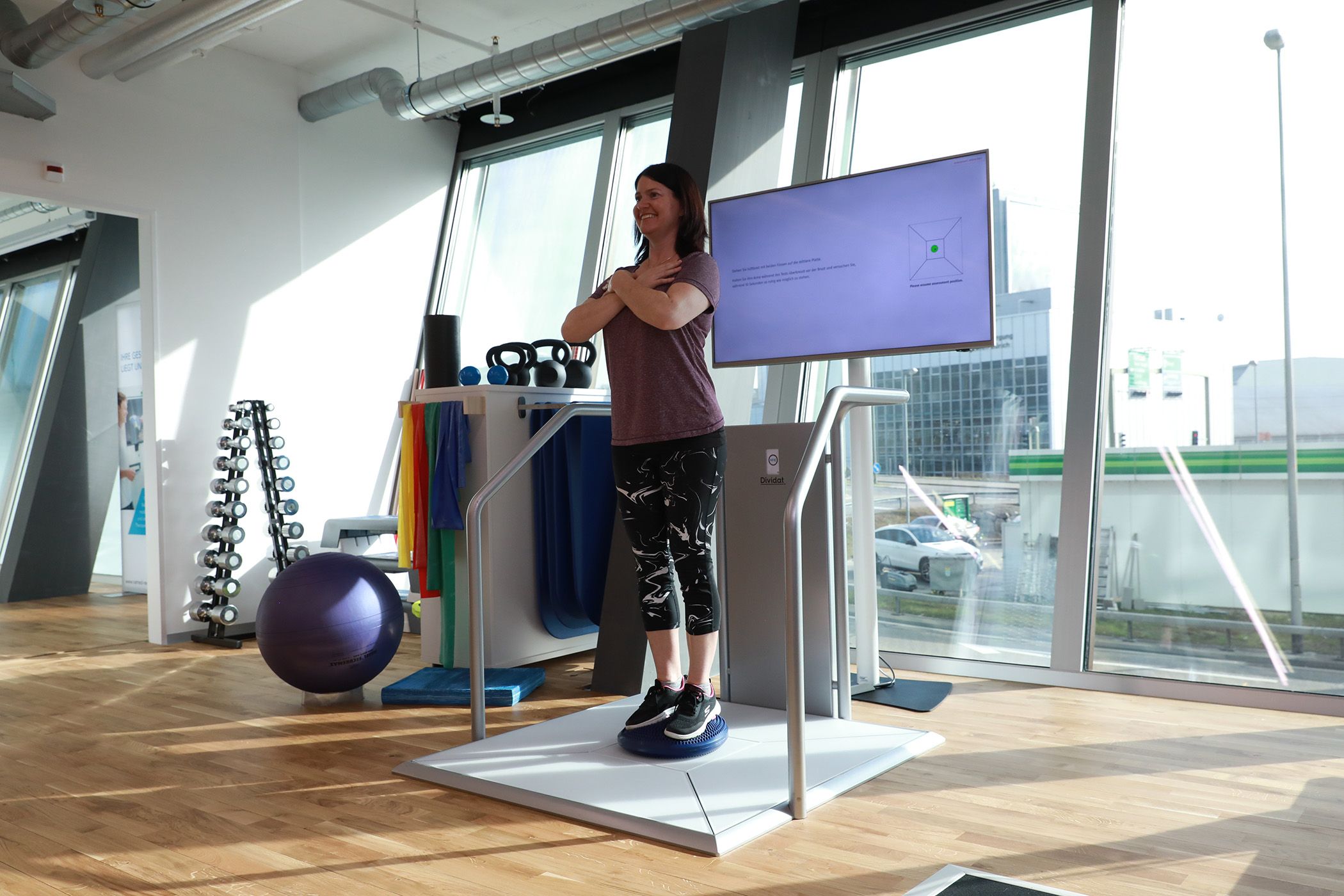news
Last month, we introduced the power of the Dividat Senso’s assessment suite—a collection of scientifically grounded tools that offer a whole-brain, whole-body view of human performance. This month, we begin our deep dive series with one of the foundational assessments: Sway.
Built on decades of neurological and biomechanical research, the Sway assessment provides a precise, data-rich look at balance, postural control, and sensory integration—all captured in just a few minutes using the Senso’s advanced force plate and cloud-based analytics.
What Is the Sway Assessment?
The Sway test evaluates a person’s ability to maintain balance across different sensory conditions. By using highly sensitive force sensors to detect even the slightest movements, the system objectively measures postural sway and instantly analyzes performance across multiple sensory pathways.
With clear, step-by-step instructions and automatic data capture, the Sway assessment offers standardized, repeatable insights—making it ideal for clinicians, wellness providers, researchers, and performance professionals alike.
How It Works: Four Conditions, One Comprehensive Analysis
The Sway assessment consists of four trials, each lasting 30 seconds. Participants stand in a defined position with arms crossed while the platform captures and records center-of-pressure movements.
1. Eyes Open on Firm Surface
This baseline condition measures sway when all three sensory systems—vision, vestibular (inner ear), and somatosensory (body position)—are active.
2. Eyes Closed on Firm Surface
With vision removed, the test evaluates how well the body maintains balance using only inner ear and somatosensory input.
3. Eyes Open on Compliant Surface
A soft or unstable surface reduces somatosensory feedback, shifting reliance to visual and vestibular systems for maintaining postural control.
4. Eyes Closed on Compliant Surface
This is the most challenging condition, limiting both visual and somatosensory input. Balance depends almost entirely on the vestibular system—offering critical insight into this often-overlooked aspect of sensory integration.
Throughout all four trials, the system calculates sway area, velocity, and directional control. It then compares the results to normative data and highlights performance differences between conditions, offering a clear picture of how each sensory system contributes to overall balance.
Why It Matters
Balance is fundamental to functional movement and quality of life. The Sway assessment is a valuable tool for:
Identifying early signs of balance or sensory dysfunction
Supporting fall risk screening in older adults or clinical populations
Tracking progress in physical therapy or rehab
Guiding individualized training and wellness plans
All of this happens in a controlled, standardized environment—providing data you can trust and act on immediately.
Science You Can Stand On
As demonstrated in our latest Think & Move video, the Sway assessment isn’t just a check-box test—it’s a scientifically validated tool that connects sensory function to motor performance. With instant cloud-based analysis and no need for manual scoring, it enables real-time insight without complexity.
It’s balance testing with clinical depth and operational simplicity—designed to fit seamlessly into real-world practice.
🎥 Watch the Video
➡️ Follow the full Think & Move series as we explore each assessment in depth.
Want to receive new episodes directly in your inbox?
📩 Email us at info.us@dividat.com to get added to our newsletter list.
